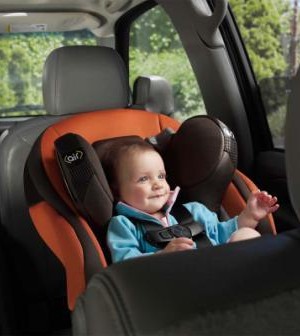- LA Auto Show - New Releases, Concepts and More
- Class Action Lawsuit Against BMW for Defective Auto Start Stop System
- More Audi Owners Complain on Twitter About Too Much Oil Consumption
- Audi is Hit With a Class Action Lawsuit for Defective Engines That Burn Oil
- Yelp’s Extortion and Strong-arming Business Practice
- What is Lemon Law?
- Small Business Legal Advice: Hiring an Attorney
- Tesla Model S Receives Perfect Safety Score
- Petty Theft - Shoplifting
Child Booster Seats Law

What is a Child Booster Seat?
Child booster seat is another name for car safety seat. There are different types of boosters including child seats, infant seats, convertible seats, etc. Each type of seat differs from the rest in age, height and weight restrictions. They must be installed in a proper way to avoid child injuries or fatalities because of improper positioned boosters.
What are the Law Requirements for Safety Child Booster Seats?
Child booster seats or safety seats law in the United States varies from state to state. In 2012, child safety seats laws were updated to focus on the age and height requirements. Following all the requirements will protect your family, avoid fines and most importantly will save lives.
Thousands of children are injured or killed every year by improperly fastened boosters. The proper use of safety seats can increase children’s chance to survive up to 45 percent.
According to the child booster seat law, children are required to:
- Ride in a child safety seat, booster, car bed or harness until they are at least 8 years old or until they are at least 4 feet 9 inches;
- Ride in the back seat while they are in car seats or other restraints.
It is very important that the boosters fit properly ensuring children’s protection during the collision. Technicians and “fitting stations” are available to fix boosters according to the vehicle’s back seat safety system. They will inspect your child’s seat and will show you how to install and use it further.
How to Choose a Good Child Booster Seat?
The National Highway Traffic Safety Administration (NHTSA) rates child safety seats based on their ease-of-use. A, B and C levels are developed to rate each seat according to ease-of-use criterion. Letter grades are given in five categories:
- Pre-assembled vs. assembly required;
- Clarity of written instruction manual;
- Clarity of labeling on child safety seat;
- Ease of installing seats in the vehicle;
- Ease of securing child safety in the vehicle.




